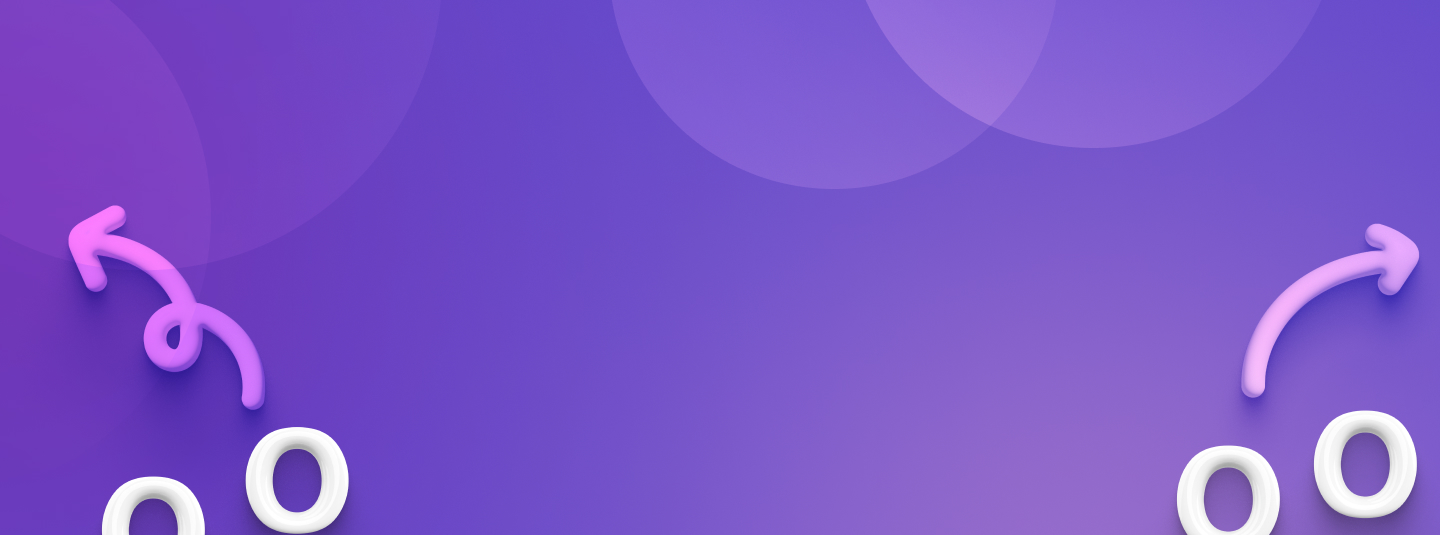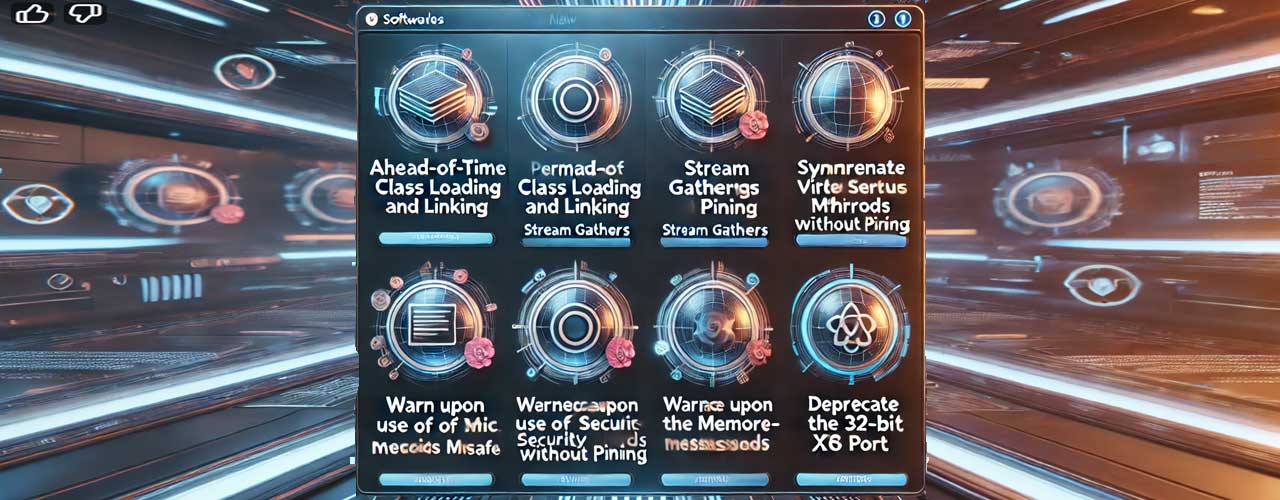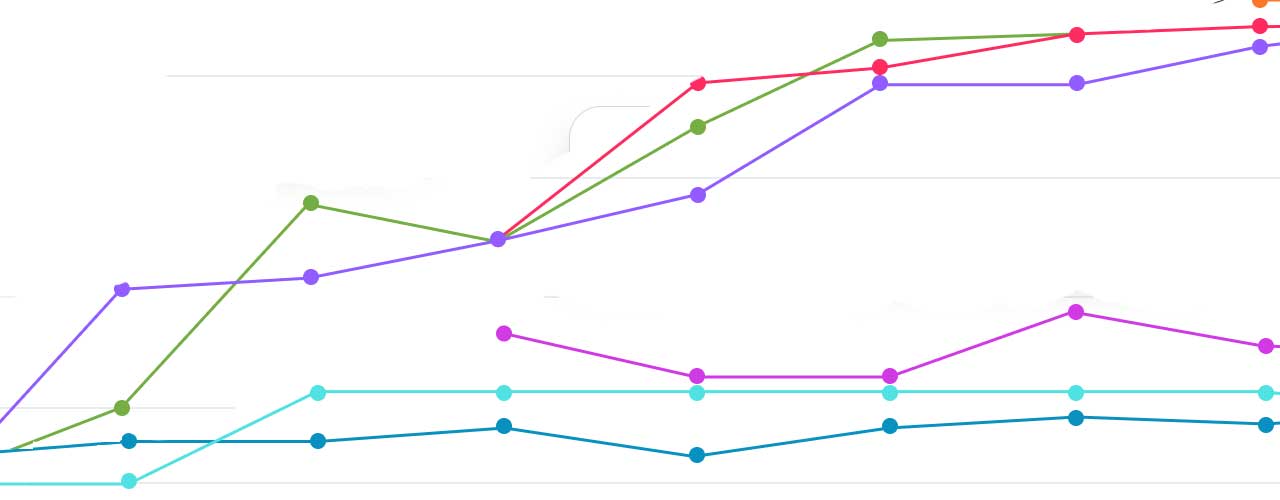
Myth: I must upgrade to the latest version of Java to improve my Java application performance in the cloud.
Reality: You don’t need to move to the latest Java release to improve performance. Azul’s High-Performance Java Platform – Azul Zing Builds of OpenJDK, included with Azul Platform Prime – is always faster than OpenJDK.
Since Java switched to its twice-a-year release model, users have been able to gain performance improvements in the platform more regularly. However, it’s commonly known that OpenJDK doesn’t consistently improve the performance of older Java versions.
Even more problematic, to take advantage of these performance improvements, OpenJDK users must upgrade to the newest versions of Java. The reality is that upgrading to a newer version is disruptive and very labor-intensive.

But it’s not true that all OpenJDK distributions force you to upgrade to get better performance. Azul Zing Builds of OpenJDK, the key component of Azul Platform Prime, is constantly improving performance on all versions of Java. And it doesn’t require any code changes or recompilation.
Azul customers typically realize many benefits from using our Azul Zing JVM. Common technical benefits include:
- Improved carrying capacity and maintaining SLAs as loads increase
- Lower CPU consumption
- Reduced latencies
- Consistent execution eliminating outliers, pauses, stalls and jitters
- Improved customer experience
- Improved throughput
- Reduced unanticipated performance tuning
- Faster time to market for new features
- Improved warmup for full performance from the outset
Let’s break this down.
Azul Zing Builds of OpenJDK performance benchmarks
Azul Platform Prime includes Azul Zing, an enhanced build of OpenJDK for superior performance, consistency and efficiency.
Azul invests heavily in making Java applications run faster by switching out components that impact garbage collection, warmup, and overall code speed. In fact, Azul continues to benchmark Zing performance in raw speed in comparison to OpenJDK. (Figure 1 – Azul Zing Performance Compared to OpenJDK)
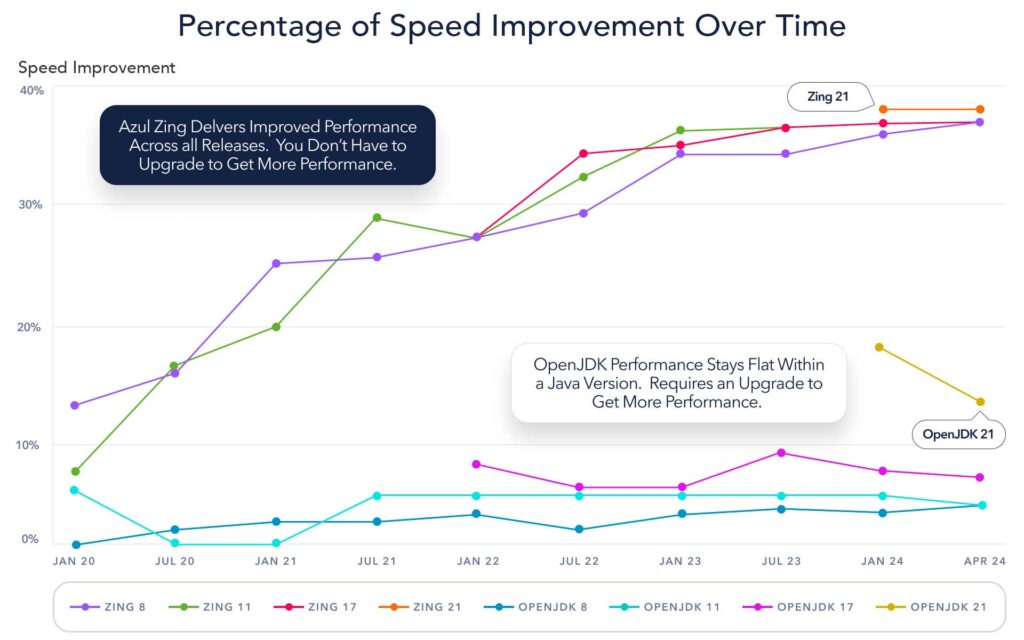
So – what does this data tell us? Three things:
- Zing improves performance – with no code changes or recompilation. With Zing, what you run in production today will run 20-50% faster – without recompiling or changing your code.
- Zing gets faster earlier. It doesn’t matter what Java version you run today. Azul customers get immediate performance gains running Java 8, 11, 17, or 21 – without upgrading to a new Java version.
- Zing just keeps getting faster…well, faster. The slopes of OpenJDK performance in the graphs are clear – OpenJDK takes a long time to achieve even modest improvements. The velocity of performance improvements in Zing is far superior to the gains made in OpenJDK.
What is the difference between OpenJDK vs. Azul Zing Builds of OpenJDK?
We start with OpenJDK as the base. Then we replace key components with our optimized versions.
Taken together, these deliver the best and most consistent performance at the lowest operating cost of any JVM.
Our customer’s cloud and performance engineering teams use Azul Platform Prime to reduce cloud waste and leverage committed cloud spend. They also improve carrying capacity while maintaining services levels for growing Java workloads. Key features and benefits:
- Faster code execution for faster Java applications. Azul customers optimize their code execution to take full advantage of the latest processors. Zing delivers faster code at lower CPU utilization with our LLVM-based Falcon JIT compiler.
- Greater consistency at higher utilization levels. Azul customers maintain consistent service levels at higher loads. They are also able to reduce noise in CPU usage over time – and eliminate pauses, jitters and stalls with C4 Garbage Collector – the world’s best pauseless garbage collector.
- Improved warmup with increased elasticity. Azul dramatically reduces disruptions and glitches when starting up new Java servers. Zing runs at full speed from the outset – and adapts, learns, and propagates optimization profiles using ReadyNow technology.
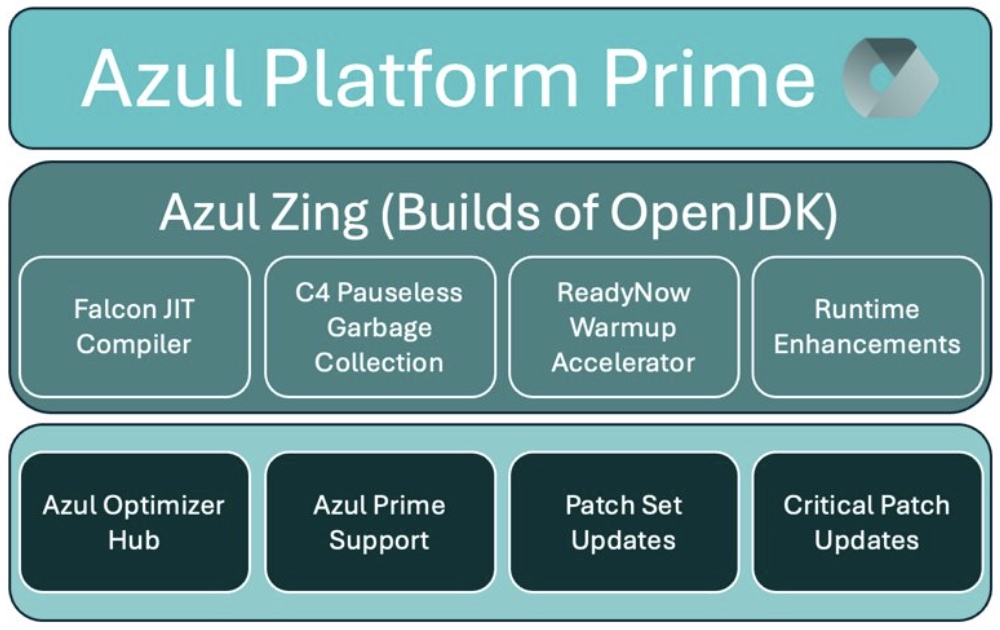
So faster is good, but what is it really good for?
For delivering the best customer experience while balancing cloud cost optimization for Java workloads – the cost to deliver that is fundamentally tied to speed:
- If you can finish or do the work faster with fewer machines, you improve carrying capacity from speed and see immediate performance gains. More efficiency drives cloud cost savings. This was critical for Azul customer Supercell. After moving to Zing, Supercell delivered a more consistent load-carrying capacity, reducing game lag and late-game ticks.
- You get more reliable, repeatable, and consistent results so you don’t need to provision more headroom of underutilized hardware. Taboola improved carrying capacity and reduced cloud waste for their Ad-server platform, reclaiming 90 incremental spare servers for growth for over 1.4B unique users/month after deploying Azul Zing.
- That consistency also turns into DevOps and engineering productivity – when Azul customers run their applications on Azul Zing in production they have fewer issues. Workday saw a 95%+ reduction in open tickets after moving to Zing. That didn’t just mean fewer outages or P1 issues, it meant unlocking more engineering capacity.
Azul continues to invest in Zing now and into the future – we continue to improve the ability to push the limits on hardware and cloud computing. Azul has opened a big positive performance gap with Azul Zing compared to OpenJDK, we will keep making that gap wider.
- Choose wisely: Your Guide to Selecting a High-Performance Java Platform
- Try it for yourself: Download and try Azul Platform Prime today
- Get started: Tips for testing and evaluating Azul Platform Prime
Download Now
Try Azul Platform Prime today


